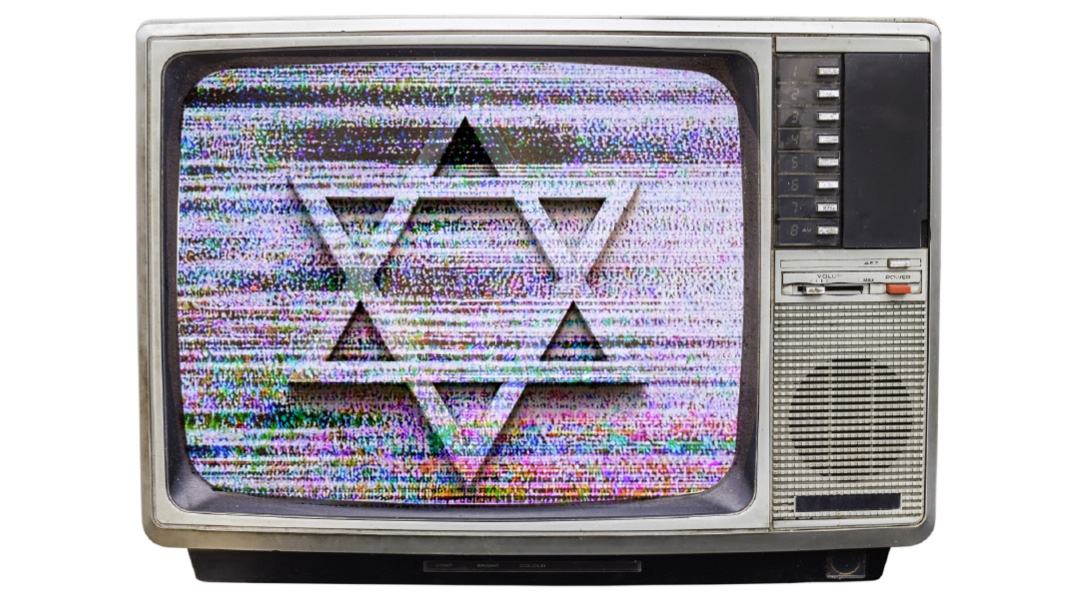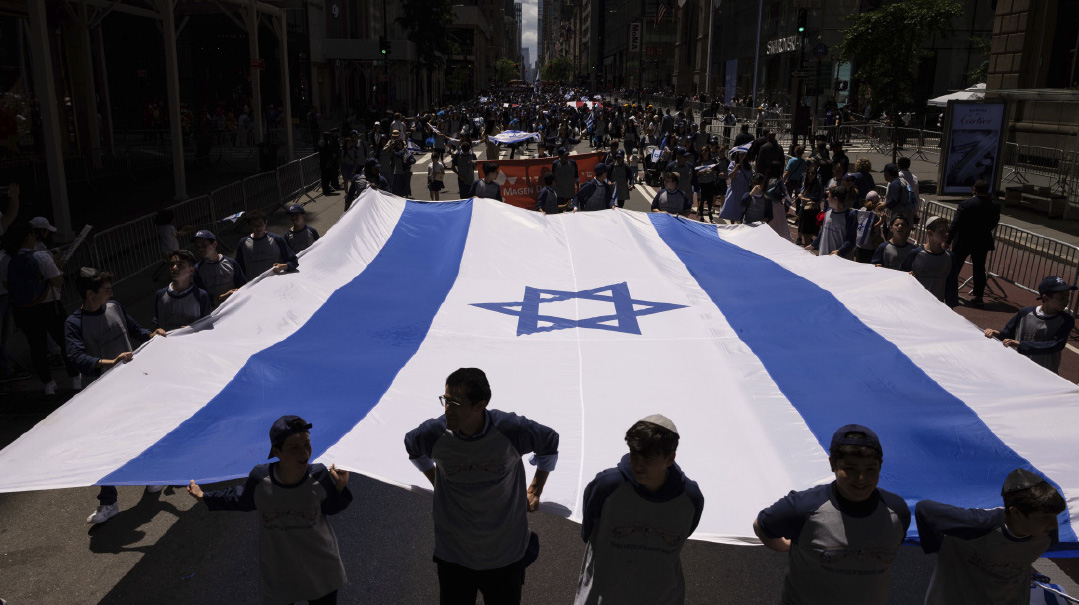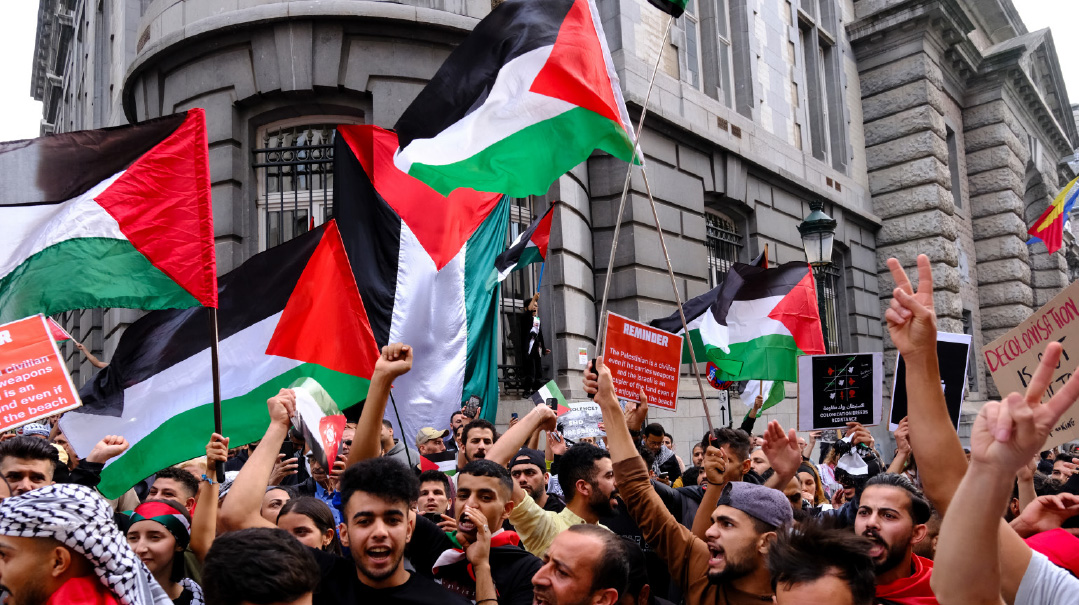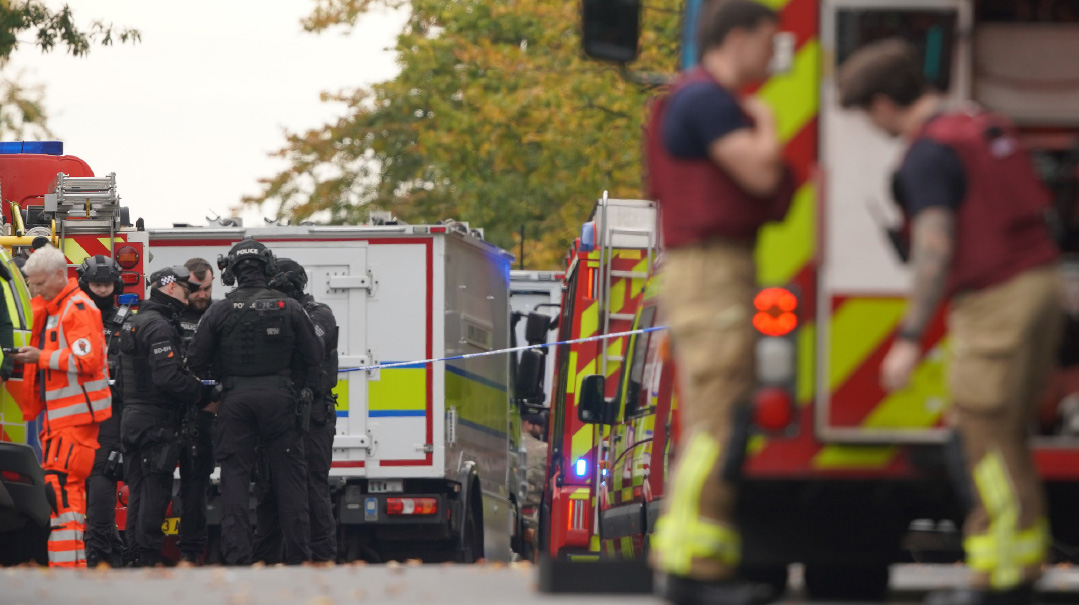Final Indignity

For millions of people across Europe and America... the proper response to the slaughter of Jews is apparently to belittle it

Computer generation has recently brought the Churban back to life. In a powerful clip that makes the rounds at Tishah B’Av time, you can feel the heat of battle, the despair as Roman legionaries swarm the ramparts and torch the Beis Hamikdash.
To get a taste of the humiliation and fear of those far-off times, though, you no longer need simulation. With the release last week of a clip showing the tatzpitaniyot — the female soldiers whose job it was to monitor the IDF’s high-tech lookout system — as they’re kidnapped from the Nachal Oz base on Simchas Torah morning, we have our own live depiction of the fall of Yerushalayim.
Substitute Palestinian for Babylonian and the road to Gaza City for the way to Rome and it’s all there. The hulking Hamas conquerors — crème de la murderous crème of a brutalized society — leer at the young Jewish women, who sit bound, battered, and bloodied. They taunt the girls, pay homage for their victory, and then cart off the wounded captives in triumphal procession.
It’s traumatic, blood-boiling viewing — and this is just the censored version, that shows none of the graphic violence of the assault on the IDF base.
You sit there in sheer impotence, raging at the blindness of the top brass who sent soldiers to the Gaza border and then refused to listen to their warnings that Hamas were up to something. You think of the madness of women serving in combat positions where they’re uniquely exposed to horrific male violence, and you rage against the Israeli elite’s progressive mania that pushes this growing trend.
It’s as if the words of Habet Mishamayim, a tefillah said on Mondays and Thursdays, leapt off the page into the Gaza border area. “We’re considered like sheep led to the slaughter, to be killed, destroyed, beaten, and humiliated.”
“And despite it all, we haven’t forgotten Your Name,” we echo the words that our ancestors said as they tried to rebuild after destruction, “please don’t forget us.”
But instead of turning fire inward, let’s leave that for the commissions of inquiry that are already underway. Let’s talk instead about the beginning of that tefillah. “Ki hayinu la’ag vakeles bagoyim — for we’ve become a mockery and ridiculed among the nations.”
Why is it, exactly, that this video has been released now, and that others like it will likely be published soon? It’s part of an 11th-hour effort to claw back some of the vanished legitimacy for Israel’s position, by reminding the world of the horrors inflicted by Hamas just a few months ago. But just why does the world need reminding? Why is there such a memory hole when it comes to something so cataclysmic that happened just last October?
Because for millions of people across Europe and America, who view themselves as enlightened, the proper response to the slaughter of Jews is apparently to belittle it.
In the days immediately after the killing, it became clear that for the bulk of the left-leaning West, Israel had gotten what it deserved. Those who — with exemplary self-control — didn’t actively glorify Hamas made it very clear that they would not tolerate a strong Israeli response.
In the warped minds of these preening bigots, the fact that more Palestinians than Israelis are currently dying means that the Jews are genocidal. That twisted calculus — applied to us in a unique double-standard — is “mockery and ridicule” personified.
And so began the inexorable move to paint Israel as the aggressor. From the Al-Ahli hospital blood libel in the mainstream media, to the travesty of Western politicians accepting the Gazan death figures as gospel, and on to the accusations of war crimes at international courts, it was a hop, skip, and jump to Israel’s current isolation.
So, we’ve been driven to a new low; left with no option but to take the pictures of our slain sons, the video clips of our beaten daughters, and publish them for progressives to pick apart, in the hope of eking out a slice of their sympathy.
That final humiliation of the Jewish People is perhaps what’s most unforgivable. It’s as if, after the Holocaust, the survivors had held up their tattooed numbers, only for the world to accuse them of being the aggressor. History will similarly judge the self-important creatures who inhabit the State Department and European chancelleries for turning victim into perpetrator.
Our people have a long memory, and we won’t forget those brave politicians who sometimes defied their constituencies to stand on the side of truth and justice. We’ll also remember those who forced us to debase the memory of our kedoshim, and pawn the dignity of our hostage brothers and sisters for a drop of legitimacy.
Sparking Change
This week marks the second yahrtzeit of one of Israel’s great unifiers — Rechovot chief rabbi Rav Simcha HaKohein Kook ztz”l. He left the world before a gaping chasm opened in Israeli society last year — a divide that even an existential war hasn’t really bridged.
While Rav Kook is no longer quietly bringing parties together behind the scenes, his legacy shows the way to the heart of the secular Israeli world. As chief rabbi of a town that hosts a secular population centered on the world-famous Weizmann Institute, Rav Kook made it his business to visit every high school — religious or not — before Rosh Hashanah and moved many students to fast on Yom Kippur.
One year, that commitment led him to Rav Elyashiv with a question: Rav Kook had a bris for twin grandsons, but it clashed with a scheduled visit to a secular school. Which came first?
Rav Elyashiv was unequivocal: if there was no chance of rescheduling, then the school visit took precedence because of the chance to save another secular student.
On that visit, Rav Kook spoke to the teens of fasting on Yom Kippur, making a play on words. “How does a person demonstrate maturity, l’hitbager?” he asked. “By acting with self-control, l’hitgaber.”
One of the boys who was present later told the Rav, “The whole day I wanted to have a drink, but your words kept going around my head: l’hitgaber, l’hitbager, l’hitgaber, l’hitbager.”
What would Rav Kook say about the sharp divides that have broken out today? He might have mentioned something that he repeated to many secular audiences.
“How is it that even Jews who don’t observe anything will give up their lives if asked to convert to Christianity?” he asked. The answer, he would say, based on Rav Tzaddok HaKohein of Lublin, is that this capacity is an inheritance from Avraham Avinu, who was willing to give up his life for Hashem. That’s why we say a brachah of “Magen Avraham” — which means that Hashem preserves that glowing ember of commitment baked into us by our forefather.
“There is no difference whether you look religious or not,” Rav Kook would tell his audience of students or scientists, “the spark is still there.”
(Originally featured in Mishpacha, Issue 1013)
Oops! We could not locate your form.







